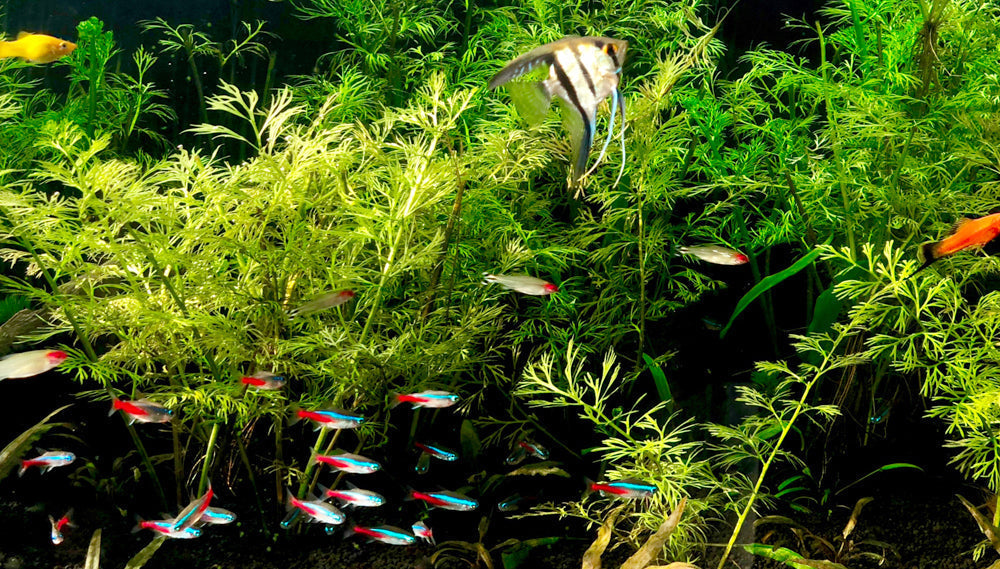
Stocking Your 125-Gallon Tank: Tips for a Thriving Freshwater Community
I get a lot of emails asking about setting up new tanks and how to properly stock them—especially larger ones like a 125-gallon. It's a fun size to work with and gives you tons of options, but it's important to take your time and plan things out for long-term success. Whether you’re dreaming of a peaceful community tank or a showpiece full of angels and color, here are a few key tips to help you get started on the right track.
1. Be Patient — Understand the Nitrogen Cycle
Before you add any fish, your tank needs time to cycle—and that means establishing something called the nitrogen cycle. In simple terms, here’s what’s happening behind the scenes:
- Fish and uneaten food produce ammonia, which is highly toxic.
- Beneficial bacteria start to grow and convert ammonia into nitrites, which are also dangerous.
- More bacteria develop to convert nitrites into nitrates, which are much less harmful and can be removed with regular water changes.
This process usually takes about 4–6 weeks, but that’s just the beginning.
It’s important to remember that even after your tank is “cycled,” it’s still evolving. A tank continues to mature and stabilize over the next several months—a process often referred to as “seasoning.” As your tank seasons, bacterial colonies grow stronger, micro-life flourishes, and the ecosystem becomes more balanced and resilient.
Tips for Cycling Your Tank:
- Use bottled bacteria: Products like Seachem Stability can help jumpstart the cycle by adding live nitrifying bacteria.
- Seed your tank: If you have access to an established, healthy aquarium, adding filter media, substrate, or decorations from that tank can significantly speed up the cycling process.
- Add a small ammonia source: You can cycle with a few hardy fish (like danios) or go the fishless route using bottled ammonia.
- Test your water: Use a liquid test kit to track ammonia, nitrite, and nitrate levels. Your tank is considered cycled when ammonia and nitrite are at 0 ppm and nitrates are present.
- Be patient: Rushing this step can lead to poor water quality, sick fish, and a lot of frustration.
2. Add Fish Slowly
Once your tank is fully cycled, add fish gradually. Introducing too many fish too quickly can overload your biological filter and trigger ammonia spikes. Start with just a few, give the system time to adjust, and monitor your water parameters between additions.
3. Don’t Overcrowd
Even though 125 gallons gives you a lot of space, every fish adds to the biological load. Consider each species’ adult size, temperament, and space needs. Stock slowly and thoughtfully to build a peaceful and sustainable community.
A helpful tool I often recommend is aqadvisor.com. It lets you input your tank size, filtration setup, and the fish you're considering. Then it gives you stocking suggestions, filtration load estimates, and compatibility warnings. It's not perfect, but it’s a great starting point to help you avoid overcrowding and plan responsibly.
Need help planning your stocking list? I’m happy to help you build one that fits your goals and keeps your fish happy.
Fish Suggestions for a 125-Gallon Tank
Here are some popular choices that work beautifully in a well-planned community setup:
-
Neon Tetras, Rummy Nose Tetras, & Small Schooling Fish
These small, colorful fish thrive in larger groups. A school of 12–20+ creates a stunning display and shows off their natural behavior. -
Angelfish
A 125-gallon tank can comfortably support 4–6 angelfish, especially if it’s tall. Just keep an eye on their behavior as they mature—some may become territorial. -
Corydoras Catfish
These bottom dwellers are peaceful, active, and love being in groups of 6 or more. They’ll keep your substrate tidy and add a lot of life to the bottom of the tank.
Final Thoughts
A 125-gallon tank gives you a fantastic canvas to build something beautiful—but success starts with patience and planning. Let your tank cycle and season properly, add fish slowly, and avoid overstocking. With the right approach, you’ll have a thriving aquarium that brings joy for years to come.
Got questions or want help putting together a stocking plan? I’d love to hear from you!
